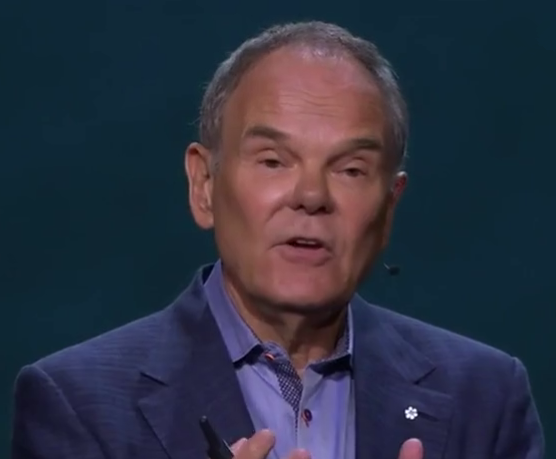And trust is established, not by some big institution,
信任的建立并不是基于一些大型机构,
but by collaboration, by cryptography and by some clever code.
而是基于合作,基于密码技术和一些精巧的代码。
And because trust is native to the technology, I call this, "The Trust Protocol."
因为信任正是起源于这一技术。我把它叫做“信任协议”。
Now, you're probably wondering: How does this thing work? Fair enough.
你也许会想:它的工作原理是什么?问得好。
Assets -- digital assets like money to music and everything in between -- are not stored in a central place,
资产--数字资产从金钱到音乐,或是其他的产品,并不储存在中央区域,
but they're distributed across a global ledger, using the highest level of cryptography.
而是分散于全球的账本之中,使用最高级别的密码技术。

And when a transaction is conducted, it's posted globally, across millions and millions of computers.
当一次交易处理完成后,它会通过数亿台计算机发布全球通告。
And out there, around the world, is a group of people called "miners."
而在全世界,有一群叫做“矿工”的人们。
These are not young people, they're Bitcoin miners.
他们并不一定是年轻人,他们是比特币矿工。
They have massive computing power at their fingertips -- 10 to 100 times bigger than all of Google worldwide.
他们手头有着巨大的计算能力--比谷歌全球规大数十倍。
These miners do a lot of work.
这些矿工要做很多工作。
And every 10 minutes, kind of like the heartbeat of a network,
每隔十分钟,有点类似于网络的一次心跳,
a block gets created that has all the transactions from the previous 10 minutes.
一个区块便诞生了,它包含了过去10分钟的所有交易信息。
Then the miners get to work, trying to solve some tough problems.
然后矿工们开始工作,尝试解决一些难题。
And they compete: the first miner to find out the truth and to validate the block,
他们彼此竞争,第一个找出真相并使区块有效的矿工
is rewarded in digital currency, in the case of the Bitcoin blockchain, with Bitcoin.
将会有数字货币的奖励,这就是关于比特币的区块链。



